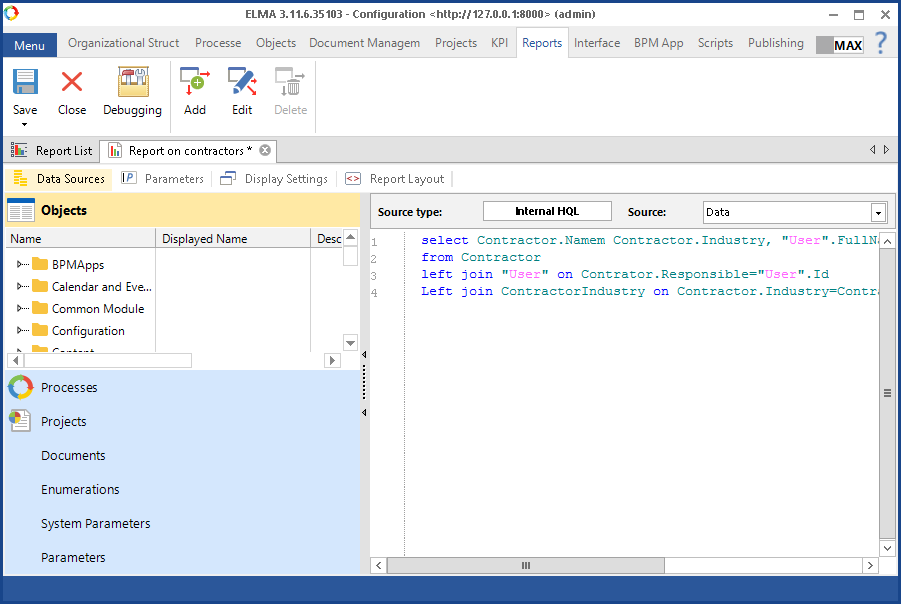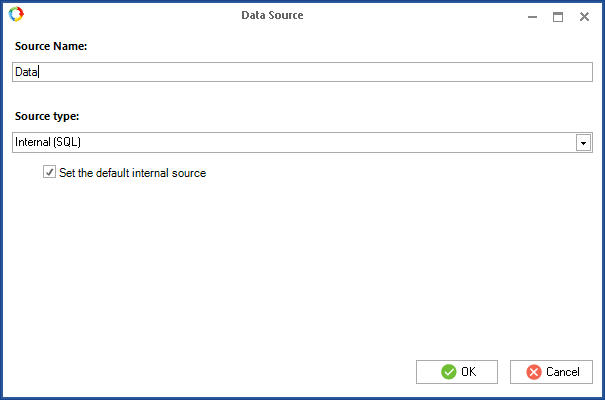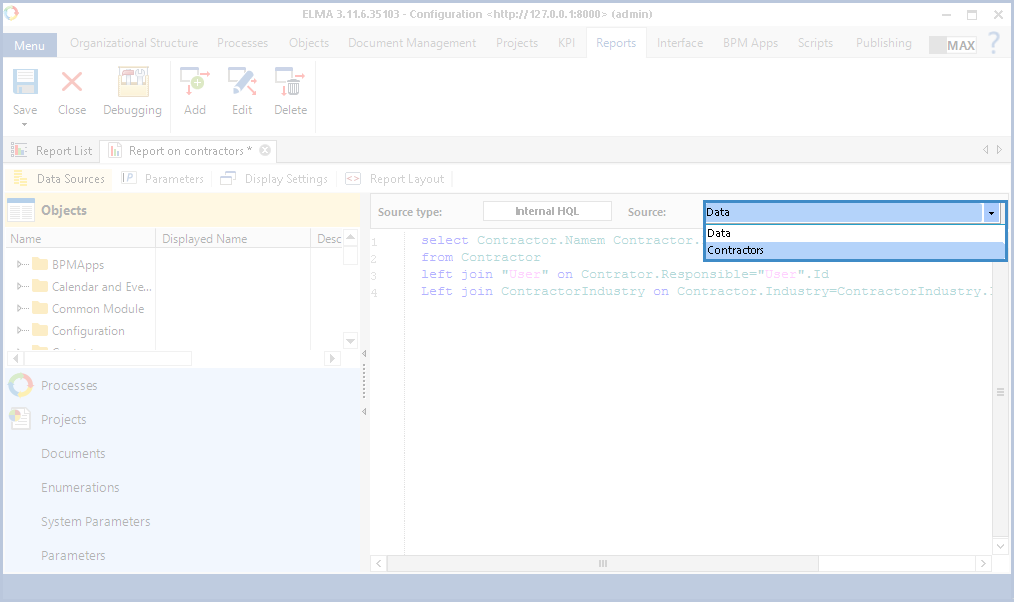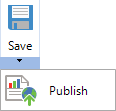Report – is systematized data for analyzing user or company activity. Data selection criteria a defined by a request to database (HQL or SQL).
On this tab (fig. 1), you can create and configure data sources, to which the requests are added. The results of the request execution are the data sources for the report layout.
|
|
|
Fig. 1. "Data Sources" tab
|
By default, each report has a data source, which you can use. The data source, created by default, support HQL requests to database. You may need to create a new data source if you need to use a different language for the request or you need an additional data source with a new request to the database. You can edit the default source (change the name, the request language). For convenience, the text editor has color highlighting scheme for working with SQL and HQL languages.
To create a data source, click Add in the toolbar. Enter the source name and select the language (HQL or SQL) in the opened dialog box (fig. 2). To save the data source, slick OK.
Connecting to an external data source
Fig. 2 shows the dialog box when connecting to an internal data source.
Fig. 2. Creating an internal data source
Source Name – name of the source.
Source type – drop down list that contains data sources (Internal (SQL), Internal (HQL), External).
Set the default internal source – if you check this box, the selected language will be used by default in all the data sources you will create in the future (SQL or HQL).
Connecting to an external data source
Fig. 3 shows the dialog box when connecting to an external data source.
Fig. 3. Creating an external data source
External source – drop down list that contains available DBMS. The number of DBMS depends on your
system edition.
Set request execution timeout – timeout for a response from an external data source (in seconds). By default - 30 seconds.
Connection string – string for connecting to an external data source. Examples:
Data Source=localhost;Initial Catalog=D:\DB\db.fdb;User ID=sysdba;Password=masterkey;Charset=UNICODE_FSS;Dialect=3;ServerType=0
Data Source=W0801;Initial Catalog=ELMA3;User ID=sa;Password=q12345;Connection Timeout=60
Host=127.0.0.1;Port=5432;Database=elma3;User Id=elma3;Password=MASTERKEY;Unicode=true
Data Source=(DESCRIPTION=(ADDRESS=(PROTOCOL=tcp)(HOST=91.217.196.93)(PORT=1521))(CONNECT_DATA=(SID=ORATEST)));User Id=elma3;Password=q12345;Enlist=false
Before clicking OK you can check the connection with the data source, by clicking Check Connection. If the connection is successful, a notification will be displayed.
The created data source will be automatically opened and added to the Source drop down list (fig. 4).
Fig. 4. Changing a data source
When you edit a data source, you can change its name and language. By default, the opened data source is available for editing.
To edit a data source, click Edit in the toolbar or the Source Type to the right of the Source drop-down list. The dialog box for editing a data source is similar to the one for creating it (fig. 2). After you have made the changes, click OK.
To delete a data source, select it in the Source field (fig. 4) and click Delete in the toolbar. Confirm deleting in the opened dialog box.
Toolbar buttons
The toolbar includes two units: Report and Data Source. The Report unit contains the report management buttons, and the Data Source unit contains the data source management buttons.
|
|
Click Save to save the changes.
When you click  and Publish, the changes are published. After publishing, the changes are displayed in Web Application. and Publish, the changes are published. After publishing, the changes are displayed in Web Application.
|
|
|
Close the current report.
|
|
|
Debug the report – open the report in browser, where you can enter parameters and generate it. This option allows quickly viewing the report in Web Application.
|
|
|
|
|
|
Edit the current data source.
|
|
|
Delete the current data source.
|
See also:
Copyright © 2006–2019 ELMA






